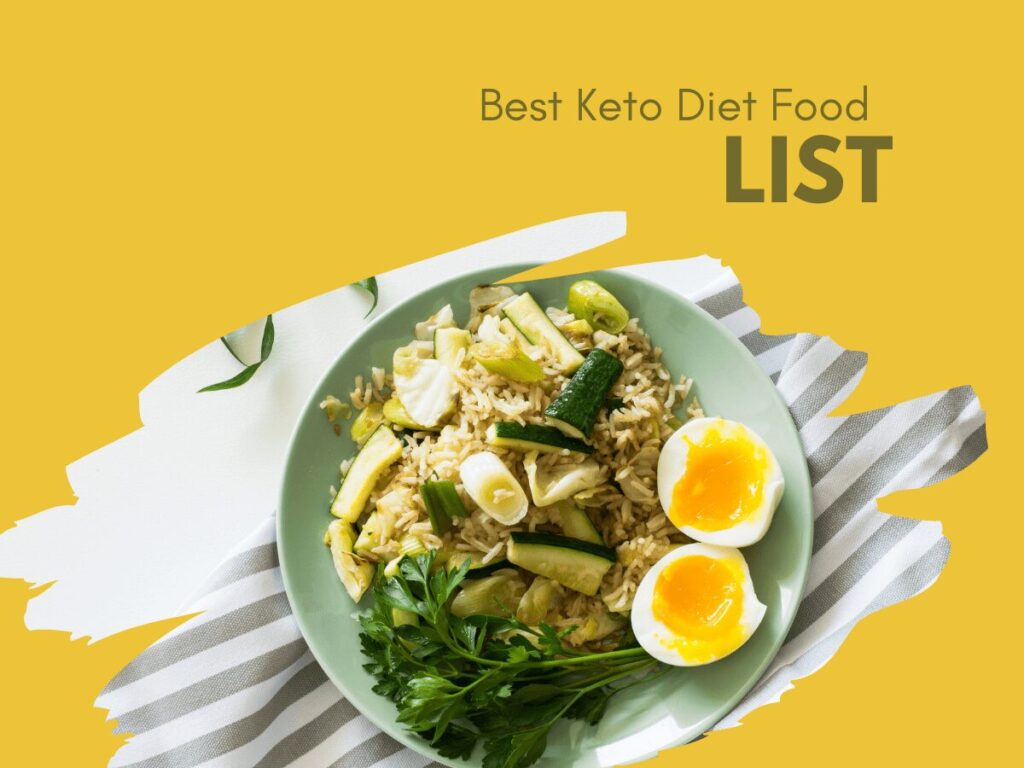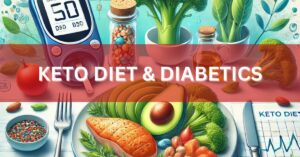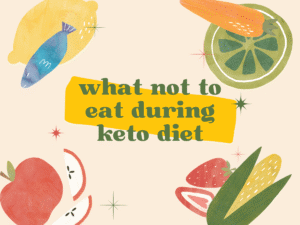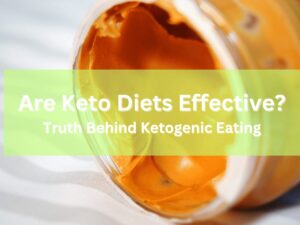This website contains affiliate links. If you make a purchase through these links, I may earn a commission at no extra cost to you. Learn More...
Understanding the Keto Diet
Before commencing the ketogenic journey, it is crucial to grasp the fundamental principles and objectives of this dietary approach. The ketogenic diet, often called keto, emphasizes a high fat and low carbohydrate intake, typically restricting carbs to about 20-50 grams per day. Your aim is to shift your body’s metabolism to rely on fat for energy instead of carbohydrates, thus promoting the production of ketones and enhancing overall fat-burning efficiency.
Defining the Ketogenic Diet: Principles and Goals
Among the various dietary options available, the ketogenic diet stands out due to its unique focus on macronutrient distribution—primarily high fat, moderate protein, and very low carbohydrate. By adopting this dietary plan, you’ll limit carb intake and teach your body to utilize fat as its primary fuel source, which can lead to weight loss and improved metabolic health.

The Science Behind Ketosis: How It Works
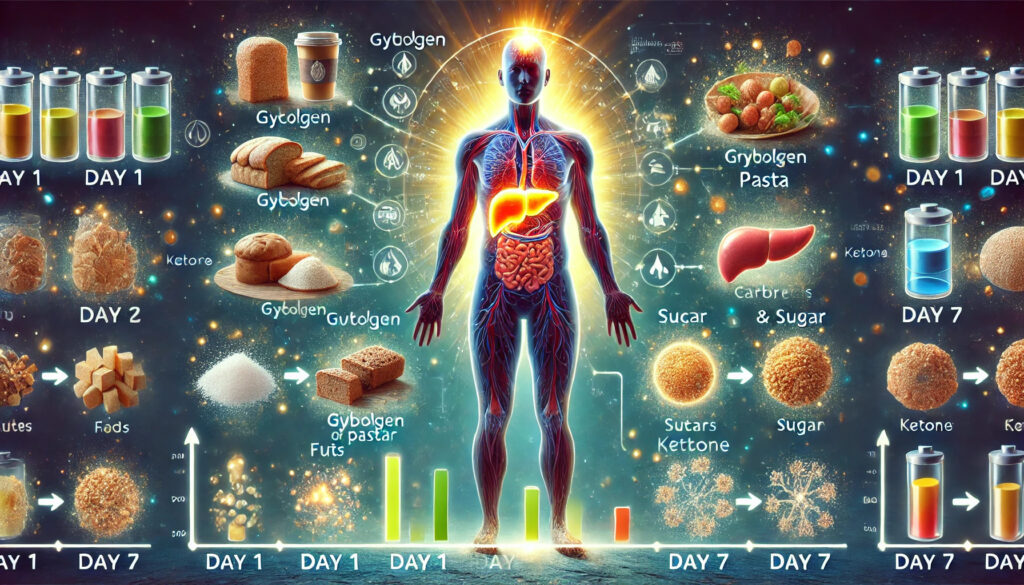
Ketosis is the metabolic state at the heart of the ketogenic diet. When carb intake is drastically reduced, your body depletes its glycogen stores, prompting the liver to convert fats into ketones, an efficient energy source. This transition allows you to maintain energy levels while promoting fat loss, as your body shifts from glucose as a primary fuel to ketones.
Understanding ketosis is crucial for maximizing the ketogenic diet’s benefits. As your body enters this state, it starts to rely more on fats and ketones for energy, which can lead to enhanced cognitive function and better physical performance. This metabolic adaptation may take a few days to a week but can significantly improve your body’s fat-burning capabilities.
The Benefits and Risks of the Keto Diet
The principles of the ketogenic diet offer numerous benefits, including weight loss, improved blood sugar control, and potential enhancements in cognitive health. However, as you progress, it’s important to also be aware of possible risks such as nutrient deficiencies and dehydration, especially in the initial phases of the diet when your body is adjusting to ketosis.
The potential advantages of the keto diet are compelling, but you must also consider the downside. While short-term weight loss is common, some individuals experience side effects such as fatigue, sleep disturbances, and digestive issues during the transition. To maintain optimal health, staying hydrated and ensuring a varied diet rich in crucial nutrients is vital.
The Best Keto Diet Food List: Essential Foods to Eat
If you’re entering into the ketogenic diet, it’s vital to understand which foods will support your journey into ketosis. A well-curated list of keto-friendly foods can make navigating your meals easier while ensuring you’re nourishing your body with the right nutrients.
Healthy Fats: Sources and Benefits
Keto is fundamentally about high fat intake, so you need to include healthy sources in your diet. Opt for avocados, olive oil, butter, and nuts, as these fats provide important fatty acids and support heart health while keeping your energy levels stable. Incorporating such fats can aid in weight loss and improve overall well-being.
Protein Sources: Meats, Fish, and Plant-Based Options
For a successful keto diet, prioritize high-quality protein sources. Focus on meat, poultry, and fish, as these options are low in carbohydrates and provide important amino acids for muscle maintenance. Eggs are also an excellent choice, being versatile and low in carbs.
For instance, fatty fish like salmon not only offer protein but are rich in omega-3 fatty acids. Beef and poultry provide high-quality fats and protein, while plant-based options like tofu and tempeh can also be included in moderation. These diverse protein sources support muscle preservation and can help you feel full throughout the day.
Low-Carb Vegetables: Nutrient-Dense Choices
The benefits of including low-carb vegetables in your keto routine include their high nutrient density and minimal carb content. Leafy greens like spinach, kale, and arugula are fantastic options, along with vegetables such as zucchini and bell peppers. These choices keep you within your carb limits while providing important vitamins and minerals.
Plant-based options like broccoli, cauliflower, and asparagus not only fit your carb restrictions but also offer fiber, antioxidants, and a variety of micronutrients. Incorporating these vegetables regularly can enhance your meals and support overall health, making your keto journey more enjoyable and balanced.
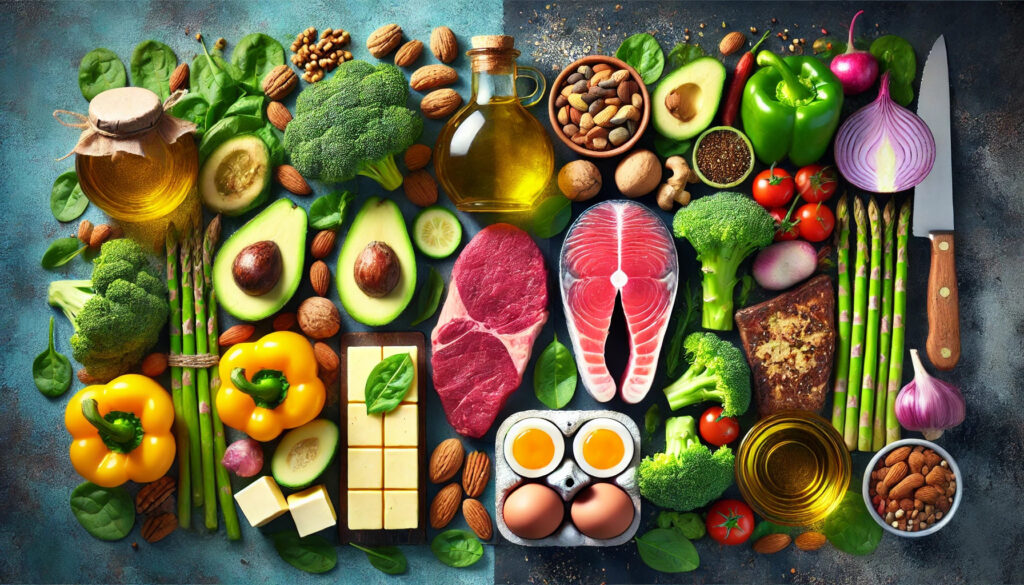
Dairy on Keto: Guidelines and Recommendations
Not all dairy products are created equal on a ketogenic diet. Understanding what types of dairy best fit your low-carb lifestyle ensures you enjoy the full benefits while maintaining ketosis.
Types of Dairy: What’s Allowed and What to Avoid
- Allowed: Full-fat cheeses (cheddar, mozzarella, goat cheese)
- Allowed: Heavy cream and unsweetened yogurt (preferably Greek)
- Avoid: Low-fat and diet dairy options, as they often contain added sugars
- Avoid: Sweetened yogurts and flavored creamers, which can spike your carb intake
- Avoid: Milk and ice cream, especially those with high sugar content
The best choices focus on high fat and low carbohydrate options to support your keto goals.
| Allowed Dairy | Avoided Dairy |
| Full-fat cheeses | Low-fat cheeses |
| Heavy cream | Sweetened yogurts |
| Plain Greek yogurt | Regular milk |
| Butter and ghee | Sugary ice creams |
| Soft cheeses (cream cheese, goat cheese) | Processed creamers |
Dairy Alternatives: Options for Lactose Intolerance
At times, traditional dairy may not work for you, especially if you are lactose intolerant. Thankfully, there are several keto-friendly alternatives that fit perfectly into your meal plans.
Understanding your options is key to enjoying dairy-like flavors without discomfort. You can choose almond milk or coconut milk as low-carb alternatives, which work well in smoothies and coffee. Opt for lactose-free yogurt or cheese, which still provides taste and texture while eliminating lactose. These products allow you to maintain the richness of dairy without adverse effects, making them suitable for your ketogenic lifestyle.
The Role of Dairy in Keto Meal Plans
Behind every successful keto meal plan is a thoughtful inclusion of dairy, which can enhance flavor and provide crucial fats. The right dairy choices can contribute to your daily calorie goals while keeping you satisfied.
Plus, dairy sources like cheese and heavy cream are not only rich in healthy fats but also serve as excellent building blocks for various keto recipes. Including these items can help you create delicious, low-carb meals that support ketosis. They add creaminess to dishes and can even be used in sauces, contributing to balanced and flavorful dietary options.
The Best Keto Snacks: Options for On-the-Go
Keep your energy levels high and cravings at bay with an array of delicious keto snacks that fit perfectly into your lifestyle. The key is to choose snacks that are low in carbohydrates and high in healthy fats to help you stay in ketosis while on the move.
Store-Bought Keto Snacks: What to Look For
After selecting store-bought snacks, aim for those that contain minimal ingredients, focusing on high fat and low net carbs. Look for items with at least 70% cocoa content in chocolate bars, and always check labels for added sugars and hidden carbs that may disrupt your state of ketosis.
Homemade Keto Snack Ideas: Simple Recipes
An excellent way to ensure your snacks fit your keto plan is by preparing them yourself. Making your own snacks gives you control over ingredients, allowing you to whip up favorites like cheese crisps, nut butter fat bombs, or veggie sticks with guacamole, all packed with flavor and healthy fats.
Simple recipes are the backbone of a successful keto snacking routine. Try whipping up homemade trail mix with nuts and seeds, or bake zucchini chips seasoned with parmesan. You can also explore no-bake options like energy bites made with coconut and almond flour for a quick and satisfying treat.
Portion Control: Managing Snacking on Keto
Keto snacking can be a delightful experience, but keeping an eye on portion sizes is imperative to maintain your carb limits. Even healthy snacks can contribute to an excess of calories and carbs if you overindulge, so measure servings and practice mindful eating.
Keto-friendly snacks should serve as an addition to your meals, not a replacement. To manage snacking effectively, portion out individual servings in advance. This strategy not only helps you stay within your daily carb targets but also prevents mindless munching, allowing you to enjoy your treats without guilt.
Common Questions About Foods on Keto
Unlike other diets, the ketogenic diet has specific guidelines that can create confusion about what foods are actually suitable. You may find yourself frequently questioning whether a food item is keto-friendly or not. This section aims to clarify those common questions for you.
Is This Food Keto-Friendly? Frequently Asked Foods
One of the most common questions you may have is whether specific foods fit within the keto framework. Many foods that seem healthy at first glance can be surprisingly high in carbohydrates. Always check the carb content, and aim to keep your daily intake between 20-50 grams to stay in ketosis.
Is Greek Yogurt Keto?
Yes, Greek yogurt can be suitable for a keto diet
While traditional fruit-flavored yogurts are high in sugar and not suitable for a keto diet, full-fat plain yogurt can be a great option in moderation. Greek yogurt, in particular, is recommended due to its higher protein content and lower carb count. Brands like Maple Hill and Stonyfield offer grass-fed options with better nutritional profiles. Adding low-carb toppings can enhance the flavor and nutritional value, making yogurt a versatile choice for breakfast, snacks, or desserts on a keto diet.
Source: Blissfully low carb
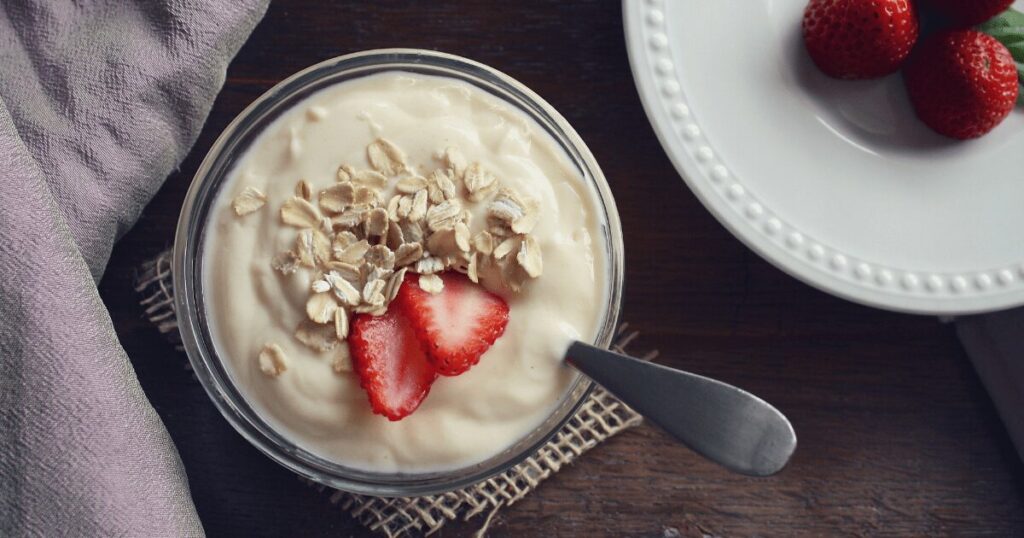
Is Cucumber Keto?
Yes, cucumber is suitable for a keto diet. It contains only 3.63 grams of carbs per 100 grams and provides essential nutrients like vitamin K3. To further reduce the carb content, you can peel the cucumber before eating it.
A ketogenic (keto) diet emphasizes low carbohydrate intake, typically limiting carbs to no more than 50 grams per day, to induce a state of ketosis where the body burns fat for energy. Vegetables play a crucial role in this diet, with non-starchy options like celery, tomatoes, spinach, and mushrooms being particularly beneficial due to their low carb content and high nutritional value. For instance, asparagus, celery, and spinach are all low in carbs and rich in essential nutrients like iron, potassium, and antioxidants. However, starchy vegetables, which contain more than 5 grams of carbs per 100 grams, should be avoided to maintain ketosis. Recipes incorporating these low-carb vegetables can help individuals adhere to their keto diet while enjoying a variety of nutritious meals.
Source: MedicalNewsToday
Is Avocado Keto?
Yes, avocados are suitable for a keto diet. They are a natural and healthy choice because they contain 1.9g of protein, 1.9g of carbohydrates, and 19.7g of fat per 100g. Additionally, avocados are a good source of important nutrients, including potassium, calcium, magnesium, and B vitamins.
The keto diet, a high-fat, low-carbohydrate diet, can aid in weight loss and may benefit conditions like diabetes, epilepsy, and Alzheimer’s. By reducing carbohydrate intake and increasing fats, the body enters ketosis, using fat for energy. Key foods for a keto diet include salmon, cheese, avocado, eggs, chicken, coconut oil, olive oil, nuts and seeds, berries, and butter and cream. These foods are high in healthy fats and low in carbohydrates, making them ideal for maintaining ketosis.
Source: goodFood
Is Dark Chocolate Keto?
Certainly! Dark chocolate can indeed be enjoyed on a keto diet, provided it is high in cocoa content (ideally over 70%) and low in sugar. The higher the cocoa content, the lower the sugar and carbohydrate content, making it more suitable for keto. For example, a 100g bar of dark chocolate with 70-85% cocoa typically contains around 20-30 grams of sugar, while a bar with 90-99% cocoa may contain only 7 grams of sugar. It’s important to consume dark chocolate in moderation to stay within daily carb limits and always check the nutritional information on the packaging. High-quality dark chocolate is also rich in healthy fats, dietary fiber, antioxidants, and essential minerals, making it a nutritious choice when enjoyed responsibly.
Source: WHITAKERS
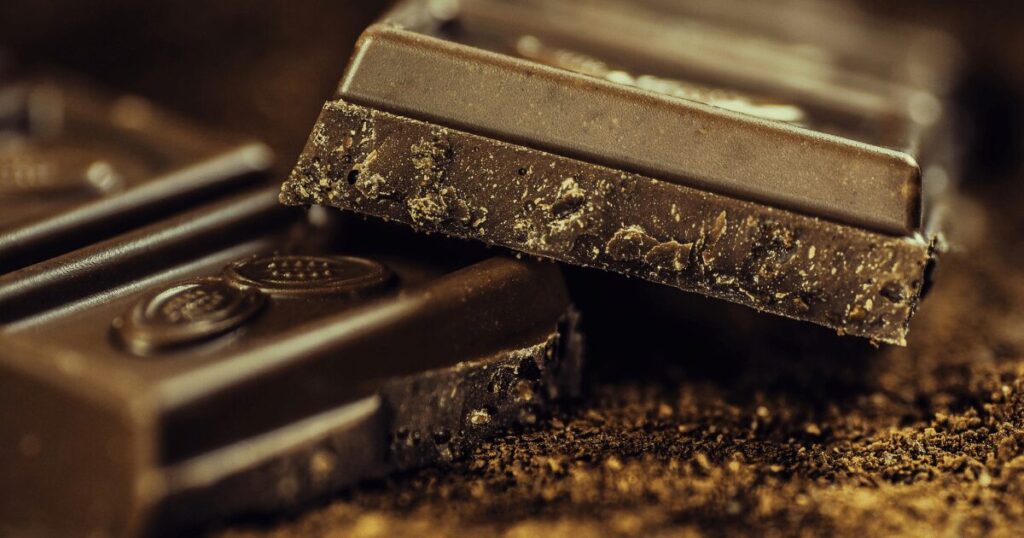
Is Cheese Keto?
Yes, cheese is allowed on the keto diet.
The ketogenic diet, commonly known as the keto diet, is a low-carbohydrate, high-fat eating plan that emphasizes the consumption of fats and proteins while minimizing carbohydrate intake. Cheese, being low in carbohydrates, fits well within the keto diet’s macronutrient requirements, which typically consist of 55-60% fat, 30-35% protein, and 5-10% carbohydrates. This makes cheese an ideal food choice for those following the keto diet, as it helps maintain the state of nutritional ketosis, where the body uses stored fat for energy instead of carbohydrates. Including a variety of cheeses can provide essential nutrients and add diversity to meals, making it easier to adhere to the diet.
Source: Dairy Australia
Is Peanut Butter Keto?
Yes, peanut butter can be part of a keto diet, but it depends on the type and ingredients.
Peanut butter is moderately low in carbs and contains both fiber and healthy fats, making it suitable for a keto diet in moderate amounts. A standard 2-tablespoon (32-gram) serving of regular smooth or crunchy peanut butter contains about 7 grams of total carbs or 5 grams of net carbs. However, varieties with added sugars, such as those containing honey, chocolate, or fruit preserves, may have too many carbs to fit easily into a keto diet. It’s important to check the ingredients for added sugars and be mindful of portion sizes to ensure they align with your daily carb limit. If you’re looking for an even lower-carb alternative, almond butter is a good option, with 6 grams of total carbs or 3 grams of net carbs per 2-tablespoon serving.
Source: healthline
Are Olives Keto?
Yes, olives are highly recommended on a keto diet because they are low in carbohydrates and high in healthy fats. Olives contain antioxidants, help reduce chronic inflammation, and support heart health.
Olives are a fantastic savory snack option because they are rich in healthy fats and contain very few carbs—only about 3 net carbs per 100 grams. Additionally, olives offer numerous health benefits, including antioxidants and anti-inflammatory properties, making them an excellent choice for anyone looking to maintain a healthy and satisfying keto diet.
Source: OLIVIERS & CO
Is Canned Tuna Keto Approved?
Yes, tuna is an excellent choice for those following a keto diet due to its high protein content and low carbohydrate levels. This versatile fish, commonly found in Asian cuisines, is available in various species such as bluefin, yellowfin, albacore, and skipjack. Tuna is not only affordable but also packed with essential nutrients like omega-3 fatty acids, selenium, and vitamin D. These nutrients contribute to heart health, immune system function, and skin health. Canned tuna, a popular and convenient option, provides about 5 grams of protein per ounce with minimal fat and carbs, making it an ideal keto-friendly food. To enhance its nutritional value, pairing tuna with fiber-rich greens like kale or spinach is recommended. Whether in salads, burgers, or steaks, tuna offers a simple yet nutritious way to maintain ketosis while enjoying a variety of delicious dishes.
Source: CHOMPS
Misconceptions About Keto Foods
Common myths often arise about what you can eat on a ketogenic diet. For instance, some believe all fats are bad, leading to confusion about healthy options such as avocados and olive oil, which are actually beneficial and vital for maintaining your energy levels.
Plus, many assume they can’t enjoy certain delicious flavors while on keto, but there are numerous alternatives and recipes that allow for satisfying meals without compromising your dietary goals. Ingredients like almond flour and keto-friendly sweeteners can enhance your culinary experience.
How to Read Labels for Keto Compliance
Compliance with the ketogenic diet requires you to become adept at reading food labels. You should focus on the total carbohydrate count while checking for fiber, as fiber is subtracted from total carbs to calculate net carbs.
Foods labeled as “low-fat” often have added sugars or starches, so keep that in mind. Ideally, you want options that are high in healthy fats and low in carbs. Products claiming to be “sugar-free” can still contain hidden carbs, so always verify the nutritional information before making a purchase.
Foods to Avoid on the Keto Diet
After starting your ketogenic journey, it’s vital to steer clear of certain foods that can disrupt ketosis. By eliminating these items from your diet, you can better achieve and maintain fat-burning efficiency, leading to your desired health benefits.
High-Carb Foods to Eliminate
Foods such as grains and starchy items—think wheat, rice, corn, and oats—should be removed from your plate entirely. Additionally, pasta, bread, and other high-carb snacks can significantly increase your carbohydrate intake, making it challenging to stay within the recommended 20-50 grams per day.
Hidden Carbs in Common Foods
Hidden sugars and carbs can lurk in many everyday foods, undermining your keto efforts. It’s vital to scrutinize labels on processed items and condiments, as they can contain unexpected carbohydrate content that adds up quickly.
In fact, common items like sauces, dressings, and pre-packaged snacks often have added sugars or starches. Even seemingly healthy options, like certain nut butters and protein bars, can include hidden carbs that can throw off your daily intake, so always check nutritional information carefully.
Beverages to Avoid While on Keto
Keto enthusiasts should also be wary of certain beverages that can sabotage your diet goals. Sugary drinks, including sodas, fruit juices, and sweetened teas or coffees, can spike your carbohydrate intake, halting ketosis.
And while it may be tempting to enjoy a drink with friends, many alcoholic beverages, especially those with sugary mixers, can delay your progress. Choosing water, black coffee, or tea without added sugars is advisable to stay on track and maintain hydration effectively.
Meal Preparation and Planning with the Best Keto Foods
For anyone starting a ketogenic diet, effective meal preparation and planning are important to ensure your success and sustain your low-carb lifestyle. By organizing your meals and snacks ahead of time, you can avoid temptation and maintain your focus on keto-friendly foods that support your health goals.
Meal Prep Basics: Setting Yourself Up for Success
Best practices for meal prep involve selecting a variety of keto-friendly foods such as fish, meat, eggs, leafy greens, and healthy fats like olive oil and avocados. Invest in quality storage containers and dedicate a specific day to preparing meals, ensuring you have everything ready when hunger strikes.
Creating a Weekly Keto Meal Plan
Along with meal prep, developing a weekly meal plan helps you stay organized and committed to your keto journey. Outline your meals and snacks based on recommended foods, ensuring you incorporate a mix of proteins, healthy fats, and low-carb vegetables to keep things exciting while meeting your nutritional needs.
With your meal plan in place, you can map out each day’s meals and adjust portion sizes to fit your individual goals. This approach reduces the chances of straying from your diet and allows for efficient shopping, helping you fill your pantry with important keto ingredients while avoiding high-carb temptations.
Batch Cooking: Efficient Strategies for Busy Schedules
Batch cooking allows you to prepare large quantities of keto-friendly meals that can be easily stored and reheated, saving you time during your busy week. Focus on recipes that can be made in bulk, such as casseroles, chili, and stir-fries, which typically give you great flavor while being easy to freeze.
Prep your ingredients in advance by chopping vegetables, marinating meats, and cooking large portions at once. By dedicating just a couple of hours on the weekend for batch cooking, you’ll set yourself up for a much smoother week, enabling you to enjoy your meals without stress and stay committed to your keto lifestyle.
Recipes for the Keto Diet: The Best Ideas to Try
Many keto enthusiasts find that preparing delicious meals makes adhering to the diet easier and more enjoyable. This guide offers a variety of recipes that cater to your keto lifestyle, from hearty breakfasts to indulgent desserts, ensuring you have everything you need to stay on track while satisfying your taste buds.
Breakfast Ideas: Starting Your Day Right
On your keto journey, starting the day with a nourishing breakfast can set the tone for healthy choices ahead. Consider dishes like avocado and eggboats, where you bake eggs in avocado halves, or a spinach and cheese omelet packed with nutrients and flavor. Both options are low in carbs, high in healthy fats, and sure to keep you satisfied until lunch.
Lunch and Dinner Recipes: Satisfying Meals
For lunch and dinner, you want meals that are not only delicious but also keep you in ketosis without feeling deprived.
Meals can include roasted salmon with a side of sautéed leafy greens, chicken stir-fry with low-carb vegetables, or zucchini noodles topped with a flavorful meat sauce. These dishes are rich in healthy fats, protein, and fiber, helping you feel full and energized. Incorporating herbs and spices can enhance flavors without adding carbs, making each meal a delightful experience that aligns with your keto goals.
Keto Dessert Recipes: Indulging Wisely
To satisfy your sweet tooth on the keto diet, opt for desserts that won’t derail your progress. Think of treats like coconut flour brownies or chia seed pudding flavored with unsweetened cocoa powder and almond milk.
But indulgence doesn’t mean sacrificing health. By using low-carb sweeteners like erythritol or stevia, you can create satisfying desserts that keep your carb intake low while providing the sweetness you crave. Exploring keto-friendly dessert options allows you to enjoy sweet delights without compromising on your dietary goals.
Once again, following the ketogenic diet while dining out can be manageable with a strategic approach. Many restaurants offer dishes that can fit into your meal plan without straying from your carb limits, and being mindful of your choices can help you stay on track.
Choosing Keto-Friendly Options
After you receive your menu, focus on selecting options that emphasize meat, fish, eggs, and low-carb vegetables. Grilled rather than breaded or fried items will often be safe bets. Salads can provide a healthy base, but opt for high-fat dressings such as ranch or blue cheese.
Tips for Communicating Dietary Needs
An effective way to ensure you get what you need is to openly communicate your dietary requirements to the staff. Be specific and clear, as this will help them understand how they can accommodate your requests.
- Specify that you are following a low-carb diet to help guide your server’s recommendations.
- Ask for sauces and dressings on the side to control your intake.
- Request substitutions for higher-carb items, such as swapping fries for side salads.
Perceiving your food preferences upfront helps create a smoother dining experience and ensures you adhere to your keto goals.
And when you ask questions about the menu, you can gain insights into how dishes are prepared. Do not hesitate to inquire about ingredients or cooking methods that may not be listed, as this will help you avoid hidden carbs.
- Inquire about gluten-free options since many gluten-rich items are also high in carbs.
- Educate your server about your dietary needs if they seem unfamiliar.
- Take notes on which restaurants offer suitable options for future visits.
Perceiving your needs is a valuable step toward effective communication and successful restaurant outings.
Fast Food: Making Smart Choices on the Go
Needs must be when fast food is your only option. Thankfully, many fast-food chains have started to cater to low-carb diets, offering items that align with your ketogenic lifestyle.
Eating out at fast-food restaurants can present challenges, but with the right approach, you can make smart decisions that align with your diet. Choose grilled chicken or beef patties without the bun, and opt for side salads instead of fries. Be cautious with dressings and sauces, as they can increase carb counts more than you’d expect.
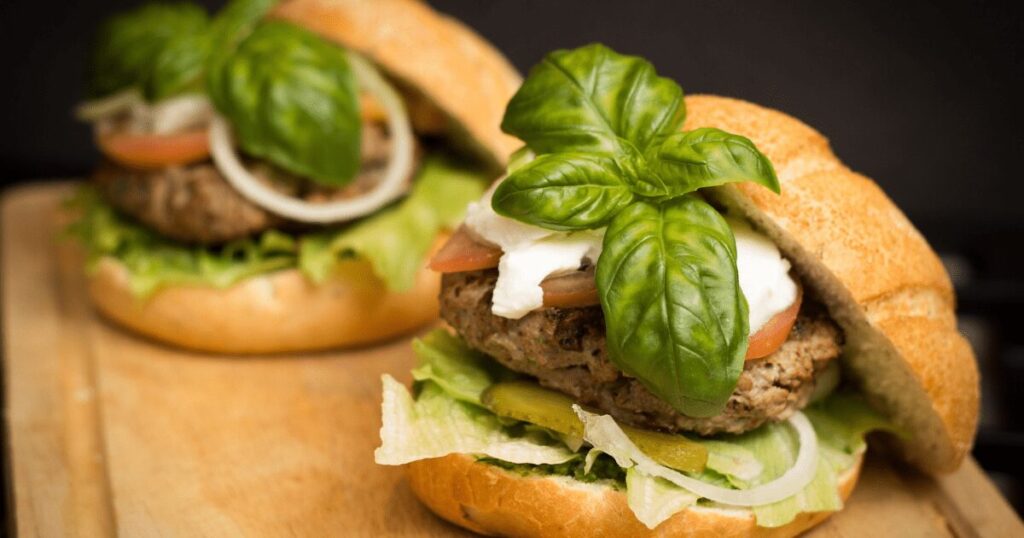
Adjusting to a Keto Lifestyle: Tips for Success
Many people find the transition to a ketogenic lifestyle challenging but rewarding. To enhance your experience and improve your chances of success, consider the following tips:
- Start gradually by reducing carbohydrate intake to avoid overwhelming your body.
- Plan your meals ahead of time to ensure you stick to keto-friendly options.
- Experiment with keto recipes to keep your diet enjoyable and varied.
- Keep track of your carb intake to stay within the recommended 20-50 grams per day.
- Seek support from keto communities to share experiences and tips.
You will find that understanding and preparation can significantly enhance your keto journey.
Tackling the Keto Flu: Symptoms and Remedies
Around 25% of individuals may experience symptoms of the “keto flu” when starting the diet, which can include fatigue, headaches, and irritability. These symptoms often stem from the body’s adaptation to burning fat for fuel instead of carbohydrates. To alleviate these feelings, focus on staying hydrated, increasing your electrolyte intake, and ensuring your meals are rich in healthy fats.
Staying Hydrated: Importance of Water and Electrolytes
Remedies for dehydration are important as your body adjusts to a keto diet. Low carb intake can lead to water loss, which necessitates a focus on hydration and electrolyte balance to prevent cramps and fatigue.
Plus, drinking enough water helps support various bodily functions and maintains energy levels. Electrolytes like sodium, potassium, and magnesium are particularly important as they can become depleted during the transition to ketosis. Consider adding salt to your meals, eating potassium-rich foods like avocados, and incorporating magnesium supplements if necessary to stay balanced.
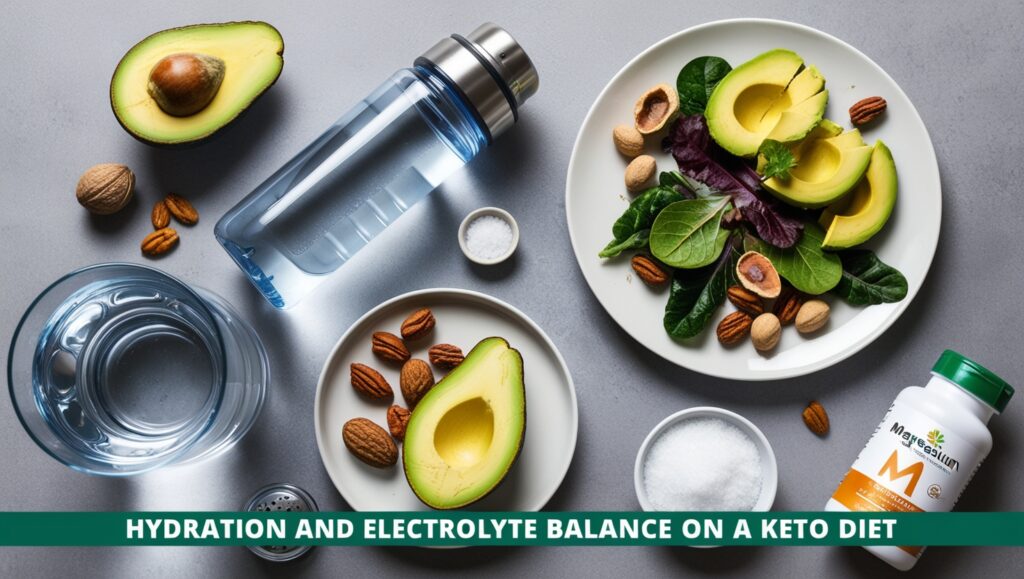
Dealing with Cravings: Strategies to Stay on Track
With the initial change in your diet, cravings for carbohydrates can arise. To combat these cravings, prioritize high-fat foods and ensure you have plenty of keto-friendly snacks available.
Another effective strategy involves finding alternative snacks that satisfy your cravings without derailing your progress. For example, swapping sugary treats with dark chocolate (with over 70% cocoa) or crunchy vegetables with dips can keep your taste buds satisfied while adhering to your dietary goals. Planning for cravings helps maintain your commitment and supports your journey toward a successful keto lifestyle.
Long-Term Success on Keto: Maintaining a Healthy Balance
Now, achieving long-term success on the ketogenic diet requires more than just sticking to low-carb foods; it’s about establishing a sustainable lifestyle that you can maintain over time.
Transitioning to a Sustainable Lifestyle
About successfully transitioning to a sustainable keto lifestyle means finding a balance that suits your preferences and lifestyle. Instead of viewing the ketogenic diet as a strict regimen, think of it as a long-term commitment to health that can be adapted to fit your needs while still prioritizing high fat and low carb intake.
Incorporating Carb Cycling: A Flexible Approach
An effective way to maintain long-term balance on keto is through carb cycling. This involves alternating between low-carb and higher-carb days, allowing you to enjoy a wider variety of foods while still promoting fat loss and energy balance.
In fact, carb cycling can help you overcome the monotony of a strictly low-carb diet and provide your body with the necessary nutrients from higher-carb foods on certain days, improving workouts and recovery time. For example, on days when you’re more active, you might increase your carb intake slightly to replenish glycogen stores, enabling sustained energy levels while maintaining the core principles of the ketogenic lifestyle.
Regular Monitoring: Keeping Track of Progress
Along your ketogenic journey, monitoring your progress is imperative for maintaining motivation and ensuring you stay on track. Regularly assessing factors like your weight, body measurements, and ketone levels can provide valuable insights into your body’s response to the diet.
Consequently, keeping a food journal or using apps to log your macros can help you stay accountable and adjust your diet as needed. By tracking these metrics, you’ll not only identify trends but also ensure that you continue to enjoy the many benefits of the keto lifestyle, such as weight loss, increased energy, and improved well-being.
The Role of Supplements in a Keto Diet
Your journey on a ketogenic diet may benefit from the strategic use of supplements. Since the diet emphasizes high fat and low carbohydrates, certain nutritional gaps might arise. Supplements can help support your overall health and ensure you achieve optimal ketosis without feeling deprived.
Essential Supplements for Ketosis
After transitioning to a keto diet, you might consider important supplements such as electrolytes, MCT oil, and omega-3 fatty acids. Electrolytes, like sodium, potassium, and magnesium, help prevent imbalances often experienced during the initial adaptation phase, while MCT oil provides a quick energy source and enhances ketone production.
Finding Quality Products: What to Look For
Along your search for supplements, prioritize quality products to ensure effectiveness and safety. Look for brands that provide clear ingredient lists, third-party testing, and certifications to guarantee purity and potency.
This attention to detail helps you select reliable supplements that support your dietary needs. Pay close attention to the sourcing of ingredients and avoid brands with artificial additives or fillers, which can detract from the benefits you’re seeking while following a keto lifestyle.
When Supplements Are Necessary: Individual Needs
Above all, the need for supplements varies by individual. Factors such as your activity level, health conditions, and dietary preferences can influence what you may require to enhance your keto experience.
To determine your specific needs, consider consulting with a healthcare professional or a registered dietitian. They can help assess your diet and lifestyle, guiding you on which supplements might be beneficial to support your health as you initiate on or maintain your ketogenic journey.
The Impact of Exercise on a Keto Diet
To maximize the benefits of a ketogenic diet, integrating an effective exercise routine can significantly enhance your results. By stimulating fat oxidation and improving metabolic health, exercise complements the transition into ketosis, allowing your body to utilize fat more efficiently for energy.
Best Types of Exercise While on Keto
At its core, combining different types of workouts can yield optimal results on a keto diet. Consider the following exercises:
- Strength training for muscle preservation
- Low-intensity steady state (LISS) cardio for fat burning
- High-intensity interval training (HIIT) for metabolic boosts
- Yoga for flexibility and recovery
- Walking for daily activity and mental clarity
Perceiving how these activities work alongside your diet can enhance overall performance and wellness.
| Type of Exercise | Benefits |
|---|---|
| Strength Training | Maintains muscle mass while in a calorie deficit |
| LISS Cardio | Enhances fat oxidation without excessive energy expenditure |
| HIIT | Boosts metabolism and increases post-workout calorie burn |
| Yoga | Improves flexibility and aids in recovery |
| Walking | Supports daily activity while promoting fat loss |

Timing Workouts with Your Eating Schedule
Your workout timing can make a significant difference in how effectively your body enters ketosis and utilizes fat for energy. Aligning your exercise with your meal schedule may help in maintaining your energy levels and optimizing fat burning.
Plus, considering the timing of your carbohydrate intake post-exercise can be beneficial. Consuming a small amount of carbs after a workout can replenish glycogen stores, especially if the exercise is intense. This tactic helps in muscle recovery without significantly impacting ketosis, allowing you to strike a balance between performance and staying in fat-burning mode.
Adjusting Workouts for Optimal Ketosis
While following a keto diet, adapting your workout routine is crucial for sustaining energy levels and maximizing fat loss. Tailoring your exercises can help you respond to how your body feels while in ketosis.
Adjusting the intensity and duration of your workouts depending on your energy levels can ensure you remain productive without feeling fatigued. This approach allows your body to safely transition into consistent fat burning, promoting overall effectiveness in your keto journey.
Common Mistakes to Avoid on Keto
All too often, beginners on the ketogenic diet overlook key aspects that can significantly impact their success. It’s necessary to be aware of these common mistakes to ensure you stay on track and achieve your health goals.
Underestimating Carbohydrate Intake
Above all, one of the most frequent pitfalls is underestimating your carbohydrate intake. Many foods, even those that appear healthy, can contain hidden carbs that can easily push you over your daily limit of 20-50 grams. It’s important to meticulously track your carb consumption to ensure you maintain ketosis.
Neglecting Nutritional Balance
With a focus on high fats and low carbs, it’s easy to forget about the importance of nutritional balance. You may gravitate toward high-fat foods while neglecting necessary vitamins and minerals from a variety of sources. A well-rounded keto diet should include a diverse range of keto-friendly vegetables, healthy fats, and quality proteins to support overall health and well-being.
A balanced intake not only aids in feeling full and satisfied but also helps prevent deficiencies and ensures you receive the nutrients your body needs. Incorporate a mix of leafy greens, nuts, and suitable dairy products to enrich your diet and maintain energy levels throughout your day.
Losing Sight of Long-Term Goals
Neglecting your long-term goals can derail your progress on the keto diet. It’s easy to get caught up in short-term results, such as initial weight loss, and lose focus on your broader health objectives. Keeping your journey and aspirations at the forefront will help sustain your motivation and commitment to the diet.
The ultimate goal is to transform your lifestyle and foster lasting health improvements, not just temporary weight loss. By setting realistic, long-term goals and regularly evaluating your progress, you can maintain your focus and successfully navigate the challenges that come with the ketogenic diet.
Resources for Further Learning About Keto
Do you want to learn more about the keto diet, and find out about the best keto diet food list? Go Here and Download your FREE report which shows how to unlock your personalized keto diet meal plan.


